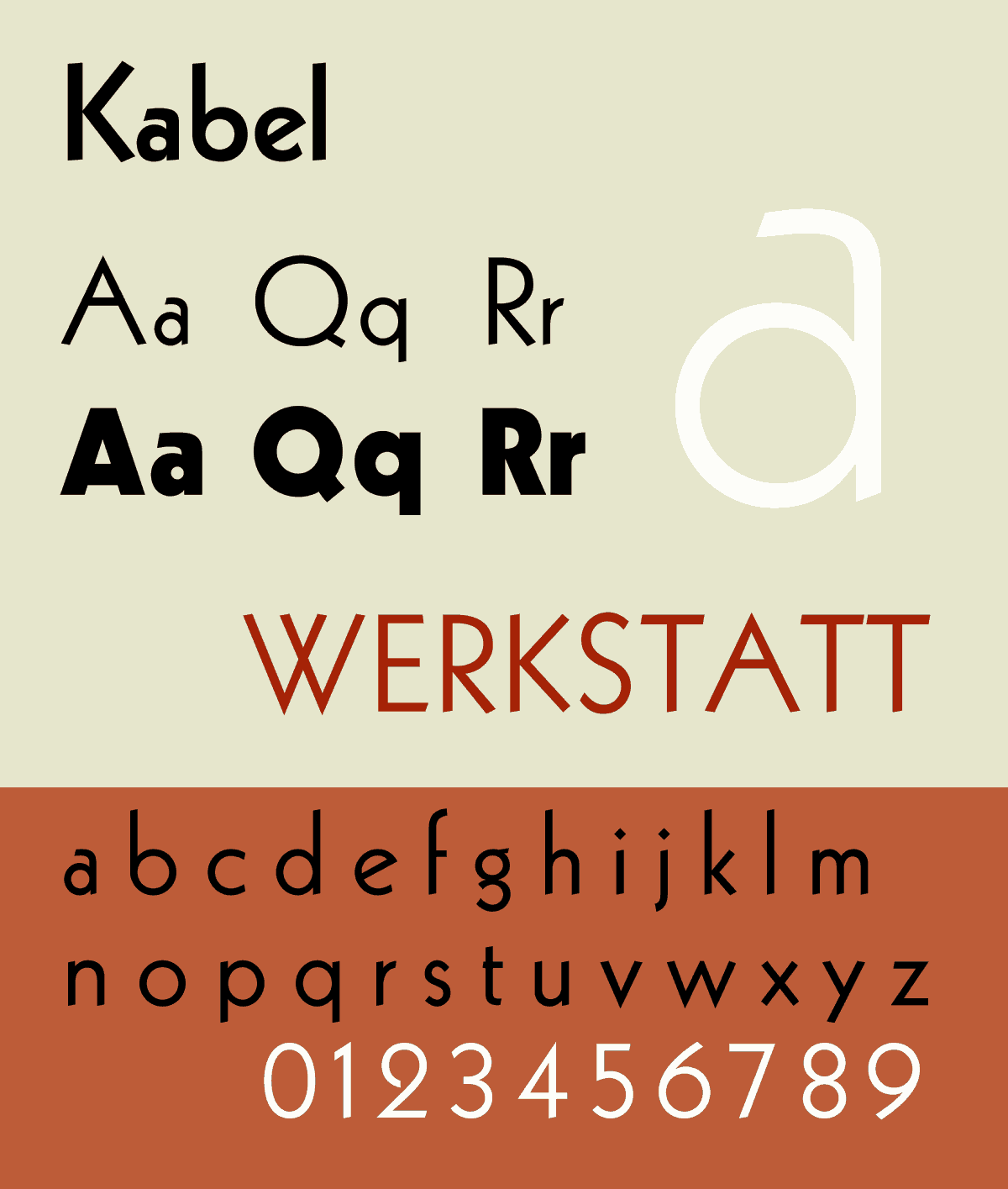Kabel 1927 Rudolf Koch
Get a feel for vintage 1920s typography with Kabel 1927 Rudolf Koch, the classic geometric sans-serif font.

Available formats: OTF, TTF, WOFF
Kabel 1927 Rudolf Koch - A Throwback to Classic Typography
Welcome to a journey back in time with the Kabel 1927 Rudolf Koch font. This classic, geometric sans-serif typeface captures the essence of the 1920s with its distinctive character set.
Signature Features of Kabel 1927 Rudolf Koch
Kabel 1927 was designed by Rudolf Koch, a well-known German type designer. This font is characterized by:
- Clean and precise lines
- Geometrically constructed letterforms
- High legibility, even at small sizes
Its visual harmony and aesthetic appeal make Kabel 1927 Rudolf Koch an excellent choice for a wide range of design projects - from print to digital, advertising to editorial designs.
Download Kabel 1927 Rudolf Koch
Add a vintage touch to your typography with the Kabel 1927 Rudolf Koch. Simply download it here and start to explore its unique charisma!
Using Kabel 1927 Rudolf Koch
This font family excels in a variety of applications. You may use it for:
- Defining the style of headlines and display text
- Giving a classic touch to logos or brand names
- Crafting elegant invitations or announcement cards
- Enhancing graphic or web design projects with a chic, 1920s vibe
Take Your Designs Back in Time
In print and digital design, fonts play an essential role in conveying a specific tone or messaging. By integrating Kabel 1927 Rudolf Koch into your projects, you can effectively capture the spirit of the 1920s and create designs that stand out from the crowd.
Embrace the timeless aura of Kabel 1927 Rudolf Koch. Download it today!